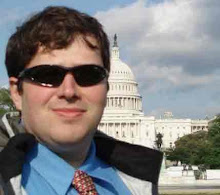Ever wonder what blown dust looks like under a microscope? No, you haven’t? Well then this post isn’t for you. Here we’re going to look at collected dust particles under extreme magnification, by way of the scanning electron microscope at the material science department at Stony Brook. If you’re interested in learning more about the machine check out the wikipedia page on how
scanning electron microscropes work and then check out the
gallery of images taken from the scanning electron microscope at Stony Brook, maintained by
Jim Quinn. Some very cool shots over there.
The images we’re about to look at are taken at a very high magnification. The particles we are looking at are in actuality tiny, but here will appear to be quite large. From these images we get an idea of how big the dust is, how it is shaped, how dense it is on the filter and what the dust particles are made of (by mass spectroscopy).
The filter we are looking at is from Pensacola, Florida. We chose Florida because it is apt to be impacted by dust from North Africa (the Sahara Desert) and possibly from Asia too. This filter is from a particularly dusty period. The sample was shared with us by Atmospheric Research Inc, and we are grateful for their assistance.
The unit of length is measured in microns, or to be technical micro-meters. The human eye can detect objects down to about 40 microns in size. A grain of salt is about 60 microns in size. A human hair is 70 to 100 microns in diameter. The objects we are looking at are between 1 and 10 microns generally, so much smaller than what the naked eye can detect.
Image #1:

The spider-like dark grey strands are Teflon filbers. They interconnect in a weave to form the filter on which particles in the atmosphere are collected. I was quite surprised that the filter looked like this. I expected it to be much more solid, but as you can see it is quite porous, well at least on a particle level.
On the filter we see three flakes of dust one in the top left, one in the top right and one in the center. The dust appears to be white on the image. The brighter the color on the image the higher the atomic weight of the particle. Thus, heavier elements appear to be bright white, and light elements appear to be dark grey. The dust particles are well rounded and look to be quite physically weathered.
On the bottom of the image, on the footer, you can see the scale bar. Using the scale bar at the bottom we can estimate the dust particles to be about 2 microns in length.
From the
spectral analysis, we see that this particle is composed mainly of silicon and oxygen, suggesting that this is likely sand. (Note if you are looking at the spectral analysis, that the fluorine peak is from the Teflon filter itself).
Image #7:

This is a much larger particle, coming in at about 5 microns in width and 10 microns in length. It has much sharper edges, suggesting it has not been weathered much.
Spectral analysis shows that this particle is composed of iron, nickel, chromium, calcium and aluminum; as well as silicon and oxygen. This suggests it is an iron oxide of some variety.
Image #10:

Again this is a very large particle, coming in at 7.5 microns in width and nearly 15 microns in length. The larger the particle the more likely it is from local sources. Large particles tend to be heavier and thus fall out of the atmosphere quicker. Thus we expect particles from distant sources like Africa and Asia to be small.
Spectral analysis suggests that this particle is composed of iron, chromium, calcium, and aluminum; as well as silicon and oxygen. This is likely an iron oxide as well.
Image #11:

This mammoth particle is over 20 microns in width and 15 microns in length. Note how smooth it looks, with rounded edges. There appear to be little deposits growing on top of the particle.
Spectral analysis shows that this particle is rich is calcium, oxygen, aluminum and silicon. It is likely calcium carbonate – with some sort mineral contained in the matrix.
Image #12:

Now we are looking at the type of particles that make up windblown dust, small and spherical, ready for flight. This particle weighs in at less than 1 micron in diameter.
Spectral analysis shows that it is composed of nearly pure lead!
Image #13:

Here is another small fellow (bright spot, center of image). He is
composed of iron, zinc and sulphur.
Image #15:

Look in the center of the image for a small grey, box like image. The particle is about 1.5 microns by 1.5 microns. This is a crystal of
pure sulphur. It has nearly perfectly squared edges.
Image #21:

Soil, dirt and sand aren’t the only particles in the atmosphere. Here we see signs of living material in the atmosphere. Take a look at the honey comb like particles in the middle of the image. I’m not a marine biologist, but those appear to be diatoms (a type of plankton from marine environments) or diatom like cells on top of a dust particle. It’s hard to tell but the strand of diatoms seem to continue downward over the dust particle, before their signal is subsumed.
I hope you enjoyed your fun science pictures of the day!















